Silvia Balzan (1985) is an architect and postdoctoral researcher at the Academy of Architecture in Mendrisio (USI). Her research focuses on the expansion of the Milan underground from the 1950s to the 1990s, analyzing the urbanistic implications of changes made to the master plan in the 1970s. She holds a master’s degree from IUAV in Venice and a Ph.D. from the University of Basel, furthermore, she was a research assistant at ETH in Zurich. In Milan, she will continue her research on the subway as a lens through which to study Milan from the post-war period to Tangentopoli in the 1990s, exploring urban, architectural, socio-economic, and political aspects.
What is the main project you will be working on during your residency?
My post-doctoral research, part of a Swiss National Science Foundation project led by Prof. Dr. Andri Gerber (ZHAW Zurich University of Applied Science), examines Milan’s metro expansion from the late 1950s to the early 1990s. This study focuses on: a) the spatial evolution of the metro lines, beginning with M1 (red) and M2 (green) and culminating with M3 (yellow) in the 1980s, and their impact on newly connected urban areas; b) changes in Milan’s urban plans, specifically the 1970s Variant, influencing the city’s growth; c) debates on mobility, public transport, urban growth, and hinterland development as framed by PSI and PCI political agendas; d) the roles of politicians, businesses, and architects involved in the metro’s construction; and e) the stylistic evolution of metro station architecture, from the rationalist designs by Franco Albini, Franca Helg, and Bob Noorda to Claudio Dini’s postmodern work on M3. Through this lens, the metro serves as both a literal and metaphorical connector, offering insights into Milan’s socio-political and architectural transformation from the post-war era through the Tangentopoli period. This project seeks to write a critical history of the metro as an intertwined entity of architecture and politics.
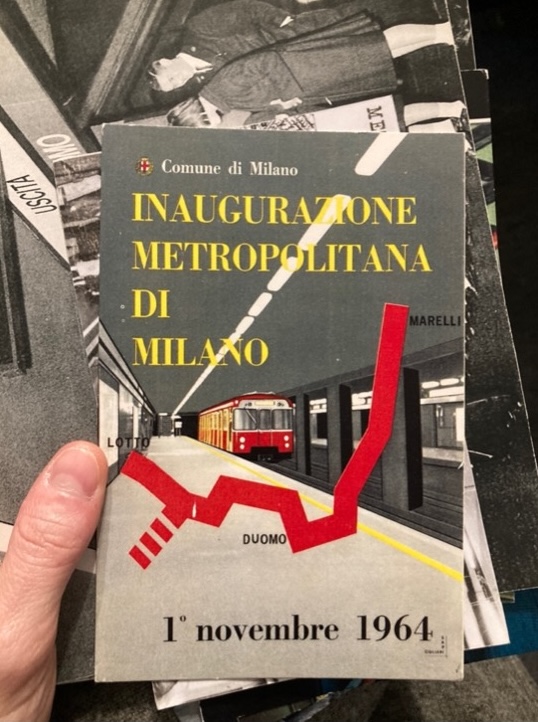
Flyer for the first line (M1) inauguration, 1964. Source: Franco Albini Foundation.
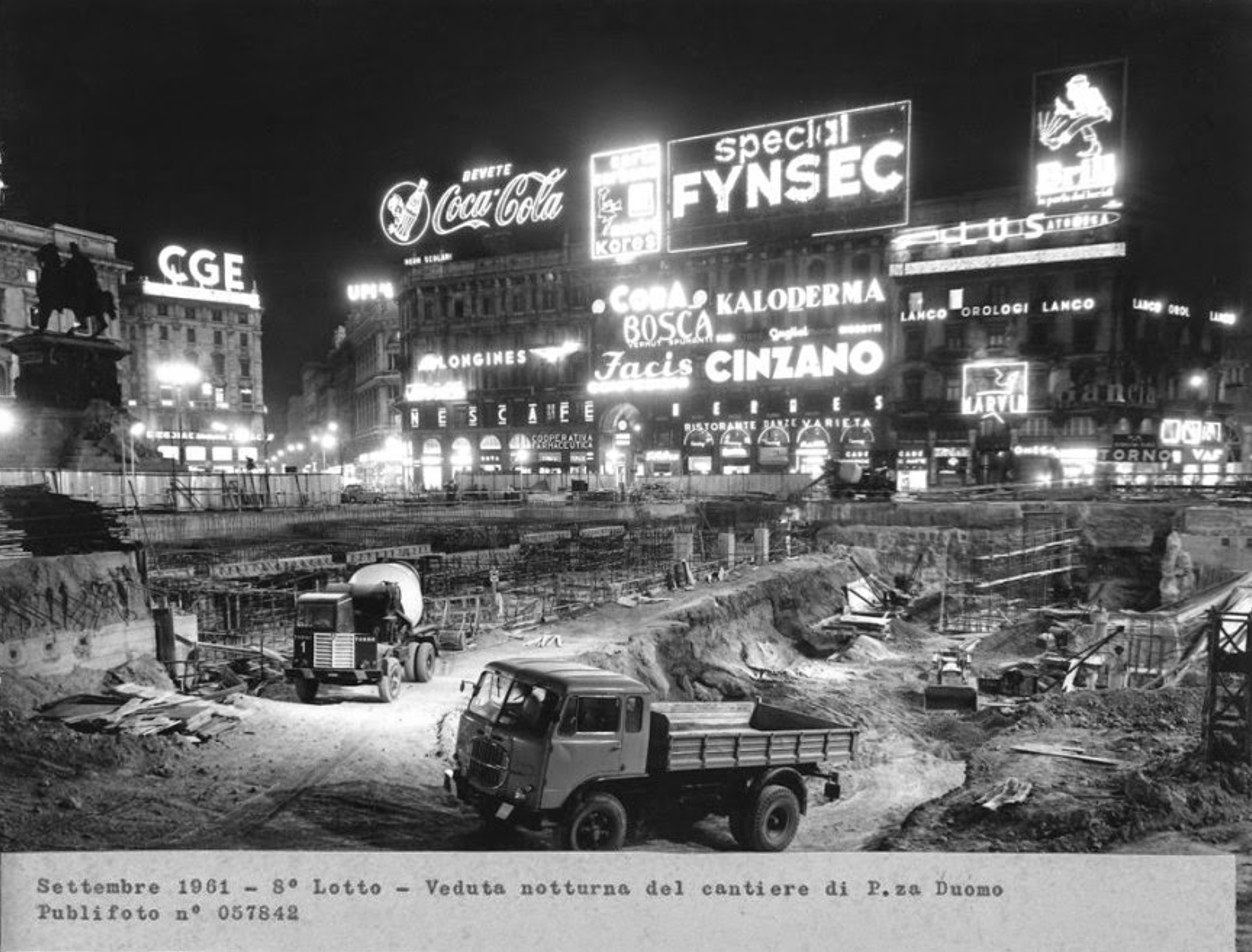
M1 first metro line works in Piazza del Duomo, 1960. Source: Publifoto. Nr. 057842.
What do you expect from the residency?
I foresee the completion of a scientific paper (which will become a chapter of a book) on Milan’s metro history and organizing an event with selected guests to discuss and spread the project.
How can the dialogue between art and science influence your work?
The discipline of architecture has always been considered a hybrid of art and science, being a “science” with an aesthetic outcome. As such, I think the dialogue is already there and inescapable.
What influences your work?
Recent excellent writings from colleagues, esteemed researchers, and educators in my field (architectural history), and a good amount of deep sleep every day.
Who do you admire most in history?
Those who are not afraid to seek the truth despite being inherently ungraspable.
What music are you currently listening to?
Lately, I haven’t listened to music anymore. I prefer podcasts.
Do you have any rituals/routines during work?
I usually work better in the morning by drinking coffee.
What legacy do you hope your research will leave behind?
Perhaps “legacy” is not the correct word. My research could contribute to Milan’s socio-cultural and political historiography and, generally, to the global history of subway developments. As part of a broader project, my research will be published as a chapter in a co-authored volume with the tentative title Red Hinterland. Redefining progressive architectural practices in postwar Milan, between political commitment and shifting social conditions (forthcoming publication in 2025, early 2026).
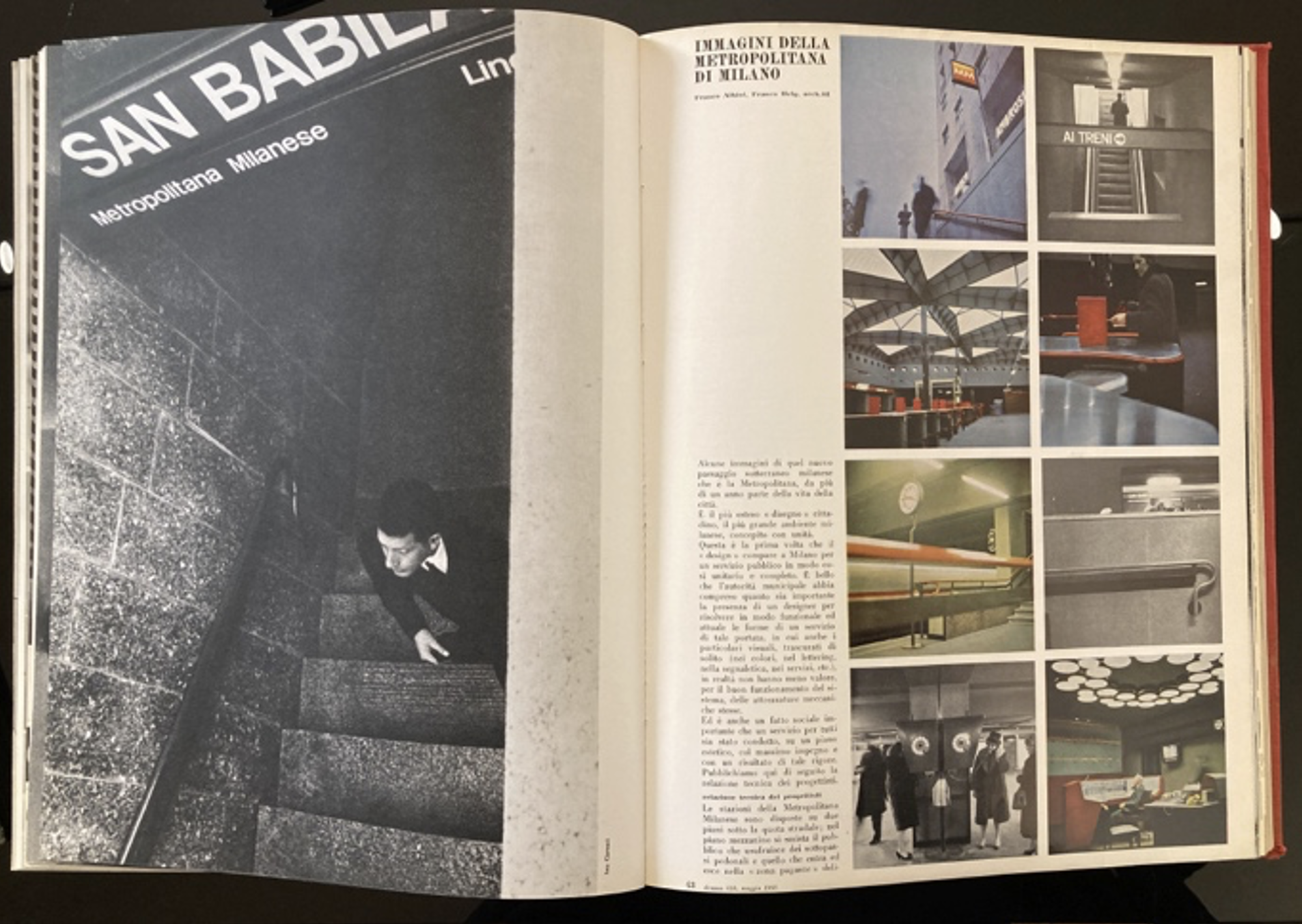
M1 design. Source: Albini, Helg. 1966. “Immagini della metropolitana di Milano” in Domus 438, May 1966. Archivio Ordine Architetti Milano.
What fascinates you about Milano?
Milano is still one of the most “European” cities in Italy. As such, it offers and hosts almost everything you could ask for, from art and architecture to fashion and food.
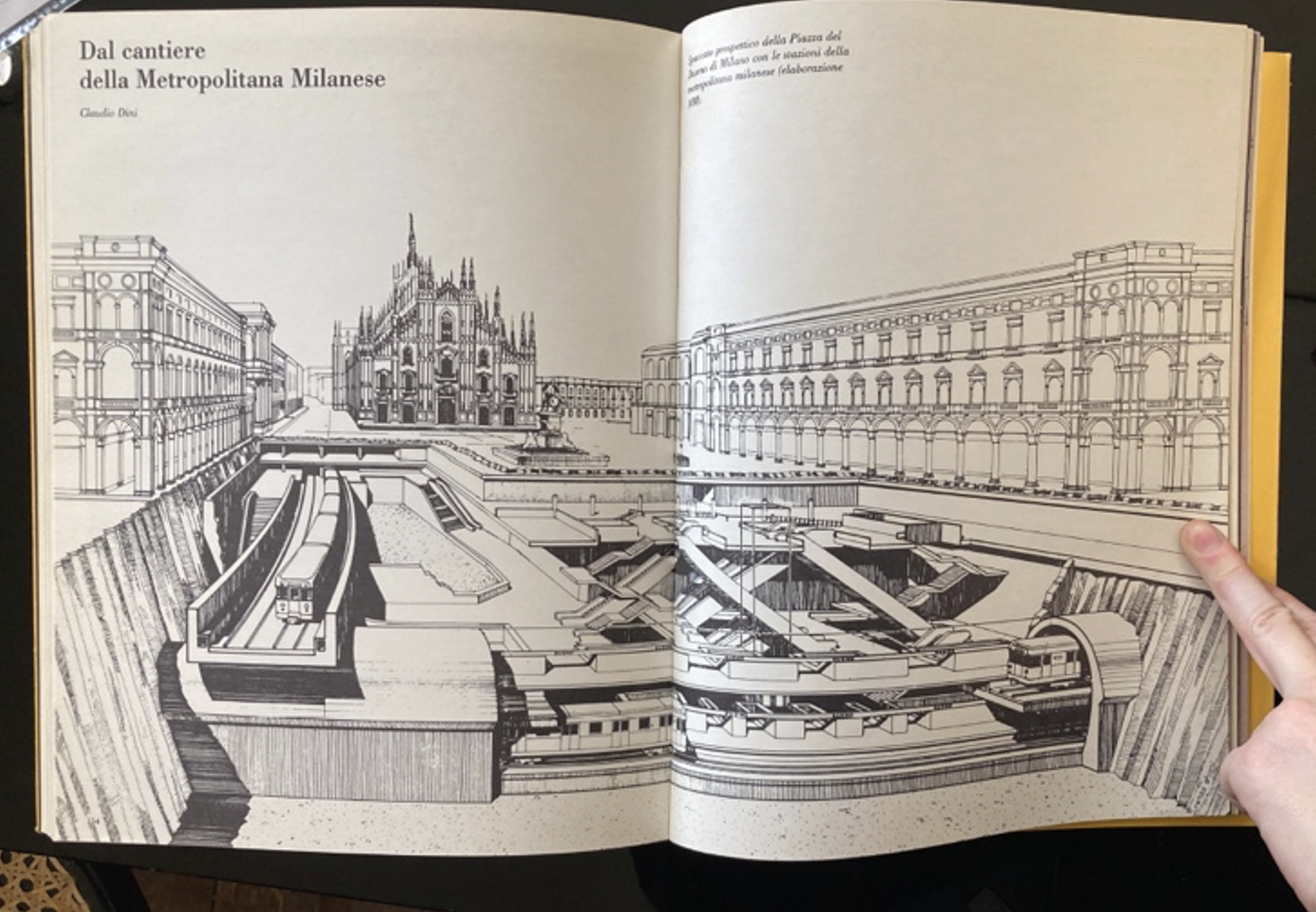
Claudio Dini’s drawing of the M3 metro line under Piazza del Duomo. Source: Dini, Claudio. (1989). Dal cantiere della metropolitana, in Zodiac 1, pp. 154-199.
The future for you is…?
My future will be in academia between architectural history pedagogy and research.
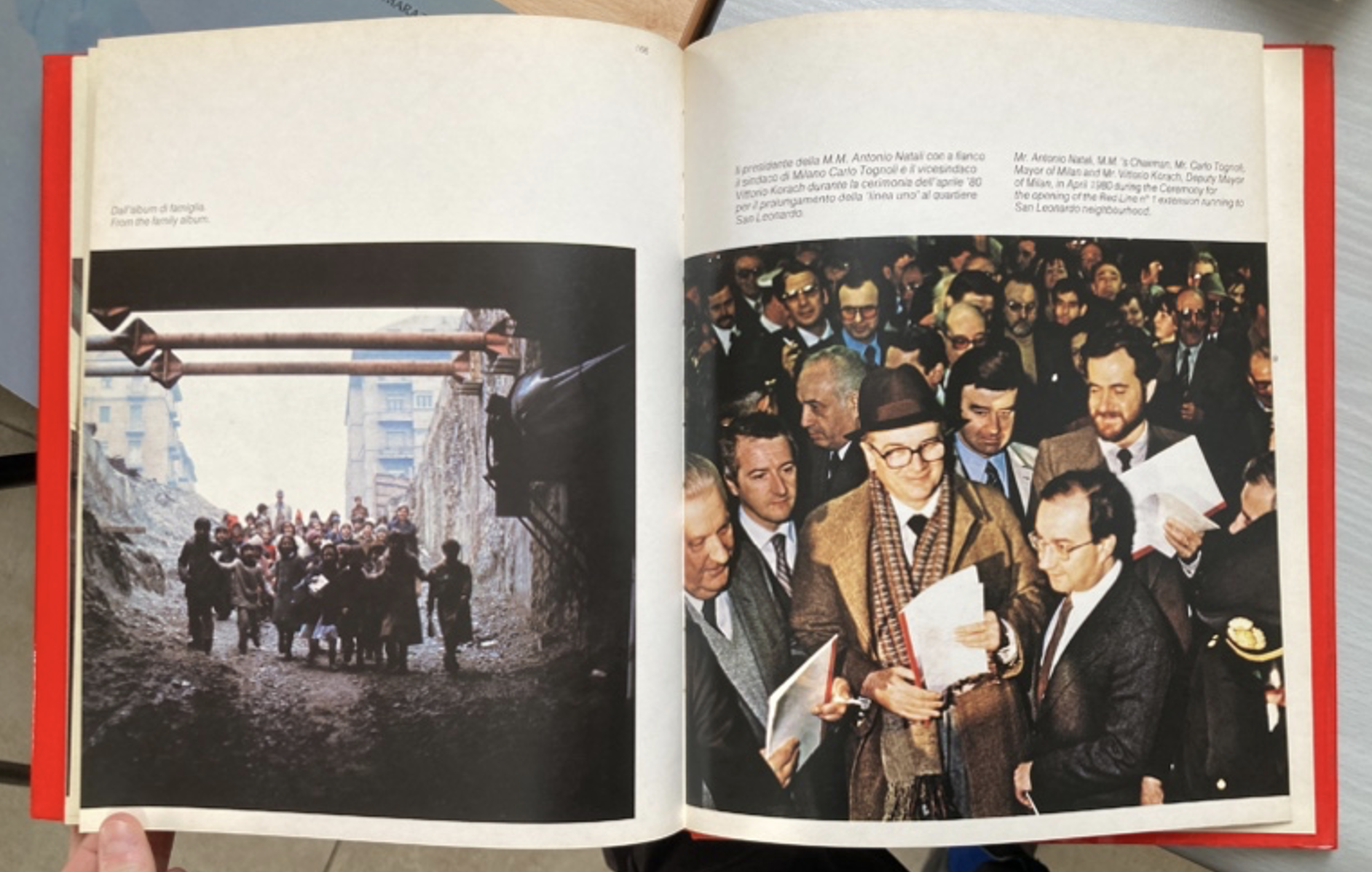
On the right: Mr. Antonio Natali, MM’s Chairman, Mr. Carlo Tognoli, Mayor of Milan, and Mr. Vittorio Korach, Deputy Mayor of Milan, in April 1980 during the ceremony for the opening of the Red Line n°1 extension running to San Leonardo neighborhood. Source: MM. Venticinque anni della metropolitana milanese spa., 1980. Edizioni MM, pp. 166-167